Our main site, with information about our books and software, reviews and more.
Our site for bridge teachers and students free downloadable support material for our books, helpful articles, forums and more.
Purchase downloadable electronic versions of MPP books.
Read and comment on regular articles from MPP authors and other bridge notables.
All rights reserved. It is illegal to reproduce any portion of this mater ial except by special arrangement with the publisher. Reproduction of this material without authorization, by any duplication process whatsoever, is a violation of copyright.
Distributed in the USA by Barricade Books
Suite 308a, 185 Bridge Plaza North Fort Lee, NJ, 07024
(800) 59-BOOKS
Canadian Cataloguing in Publication Data
Bird, David, 1946 Defensive signaling
(Bridge technique; 8) ISBN 978-1-55494-008-0
Contract bridge - defensive play. I. Smith, Marc, 1960-. II Title.
III. Series: Bird, David, 1946-. Bridge technique; 8
GV1282.42 B57 2001 795. 41.53 C00-933112-3
Cover design and Interior : Olena S. Sullivan Editor : Ray Lee
Printed and bound in Canada
1 2 3 4 5 6 7 07 06 05 04 03 02 01

C ONTENT S

Introduction  The attitude signal The count signal Which method is better?
The attitude signal The count signal Which method is better?
Chapter 1 Attitude Signals  How do you know when to encourage? Which spot cards count as a high signal? The limitations of attitude signals
How do you know when to encourage? Which spot cards count as a high signal? The limitations of attitude signals
Chapter 2 Count Signals 
 Signaling count when declarer leads a suit Do not save declarer a guess Signaling count when our side lead a suit Does partner hold four cards or two? Signaling from an honor sequence Signaling count when returning partners suit The limitations of count signals
Signaling count when declarer leads a suit Do not save declarer a guess Signaling count when our side lead a suit Does partner hold four cards or two? Signaling from an honor sequence Signaling count when returning partners suit The limitations of count signals
Chapter 3 Combining Count and Attitude Signals 
 Asking for count when leading a long suit Asking for attitude when leading a short suit Leading from A-K-x-x Signaling attitude on an ace Unblocking after a king lead at notrump Signaling count when you attitude is obvious
Asking for count when leading a long suit Asking for attitude when leading a short suit Leading from A-K-x-x Signaling attitude on an ace Unblocking after a king lead at notrump Signaling count when you attitude is obvious
Chapter 4 Suit-Preference Signals 

Suit-preference signals when following suit
Suit-preference signals at Trick 1
Chapter 5 Discarding 
 The limitations of attitude discards The limitations of suit-preference discards Throw losers, keep winners
The limitations of attitude discards The limitations of suit-preference discards Throw losers, keep winners
Chapter 6 Other Types of Signal 

Signals in the trump suit
The Smith Echo

Bridge Technique Series
Entry Managemen t Tricks with Trump s Safety Play s Eliminations and Throw-In s Deceptive Card Pla y Planning in Suit Contract s Planning in Notrump Contract s Defensive Signalin g Squeezes Made Simpl e Planning in Defens e Reading the Card s Tricks with Finesse s


Introductio n

Defending is hard, very hard. Many players are good bidders and even more are superb dummy players. Few are exceptional defenders. Anyone who defends even moderately will be a regular winner.
There are three main reasons why defending is so much tougher than declaring. For a start, declarer usually holds the majority of the high cards and, in a suit contract, most of the trumps. He will therefore be on lead most of the time. He can switch tacks as it suits him. Your chances to influence the outcome of the hand as defenders will be far fewer. You will seldom have time to test the water you or your part ner will often have to find the best switch or continuation on your first attempt. It is therefore imperative that you both signal accurately so that the defender who must make the critical decision will be in posses sion of sufficient information.
Secondly, declarer can see his sides strengths and weaknesses. As a defender, you can see only half of yours. For example, we learn in an early lesson on declarer play to lead towards your strength. As a defender, you will often not even know where that strength lies. Accurate defensive signals can provide this information.
Declarers final advantage is that he controls both his hand and the dummy. As each of the defenders manages only half of their sides assets, they must work in tandem. It is no good, for example, if one defender is playing to force declarer while the other is trying to set up a defensive ruff you must work as a partnership. Defensive signals are the tools that enable you to achieve this goal.
You will frequently hear players make comments along the lines of, I didnt signal because I didnt want to give information to declarer. It is true that there are some situations in which a signal will

Introduction
be of more help to declarer than it is to your partner. A good rule to fol low is this: If the information might help your partner to find the best defense later in the hand, you should signal accurately .
Having established that you want to signal accurately, lets start to look at how you can signal. There are two main methods attitude signals and count signals. To some extent, they are rival methods and you must choose between them.

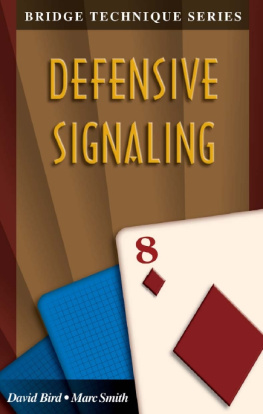
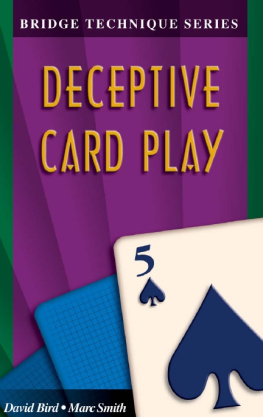
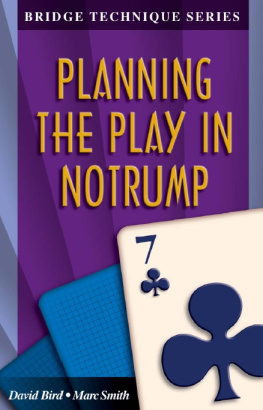
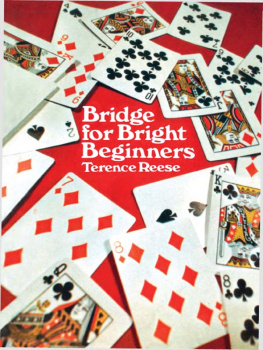








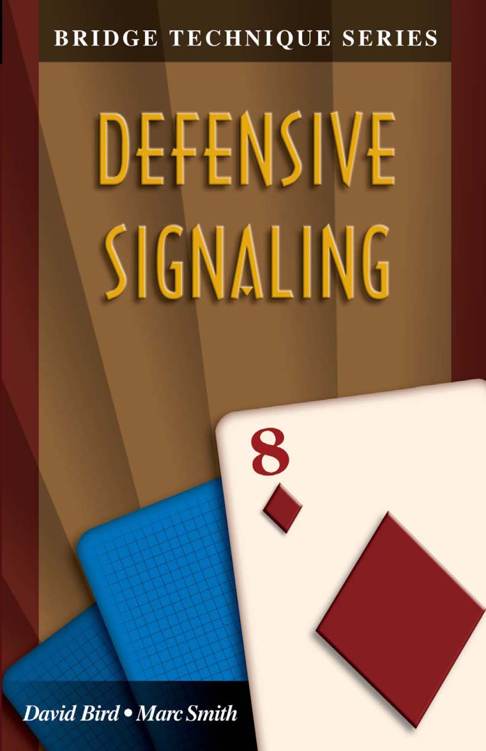



 The attitude signal The count signal Which method is better?
The attitude signal The count signal Which method is better? How do you know when to encourage? Which spot cards count as a high signal? The limitations of attitude signals
How do you know when to encourage? Which spot cards count as a high signal? The limitations of attitude signals
 Signaling count when declarer leads a suit Do not save declarer a guess Signaling count when our side lead a suit Does partner hold four cards or two? Signaling from an honor sequence Signaling count when returning partners suit The limitations of count signals
Signaling count when declarer leads a suit Do not save declarer a guess Signaling count when our side lead a suit Does partner hold four cards or two? Signaling from an honor sequence Signaling count when returning partners suit The limitations of count signals
 Asking for count when leading a long suit Asking for attitude when leading a short suit Leading from A-K-x-x Signaling attitude on an ace Unblocking after a king lead at notrump Signaling count when you attitude is obvious
Asking for count when leading a long suit Asking for attitude when leading a short suit Leading from A-K-x-x Signaling attitude on an ace Unblocking after a king lead at notrump Signaling count when you attitude is obvious


 The limitations of attitude discards The limitations of suit-preference discards Throw losers, keep winners
The limitations of attitude discards The limitations of suit-preference discards Throw losers, keep winners





